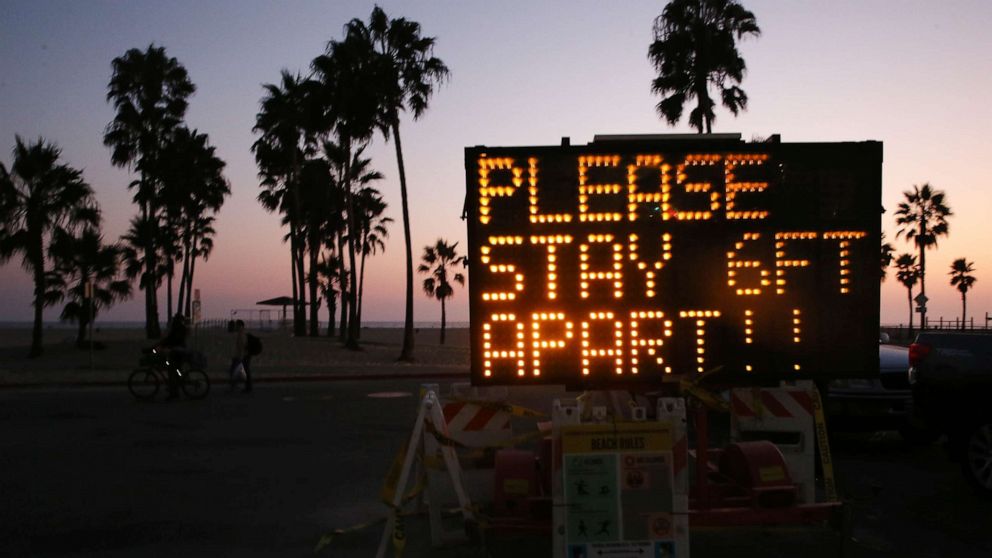
Health experts are pleading with the American public to be vigilant during the upcoming Labor Day weekend to prevent a repeat of the increase in COVID-19 cases that followed the Memorial Day and the Fourth of July holidays.
"We don't want to see a repeat of the surges we've seen following holiday weekends," said Dr. Anthony Fauci, director of the National Institute of Allergy and Infectious Diseases, during an interview with CNN on Thursday. "That doesn't mean you have to lock yourself in a room and not enjoy what hopefully will be a nice weekend for people, but there are certain fundamental things that you can do and still enjoy yourself."
Large social gatherings, crowded venues, juxtaposed to the highly infectious virus, have proven to result in a widespread escalation of metrics across the country.
Memorial Day appeared to be the first domino of the summer surge, setting off an influx of cases across many states in the following weeks and months.
On May 25, Memorial Day, the national seven-day average of new cases was 21,955. Five weeks later, on June 29, the seven-day average jumped to 40,178, an 83% increase in new cases, according to an ABC analysis of data compiled by the COVID Tracking Project, and from where the below data is cited.
In the weeks following the holiday, the South saw a rise in its COVID-19 metrics and on May 25, reported an average of 7,641 new daily cases. A month later, that number had increased by 126%.
A similar pattern occurred just over a month later following the Fourth of July weekend.
Just two weeks after July 4, the U.S. hit a record high of 76,844 daily cases, and a seven-day average of new COVID-19 cases had risen by nearly 40%. By July 23, current hospitalizations hit a near-record high of 59,720 -- an increase of 56.6%.
Eight weeks after Memorial Day, and three weeks after the Fourth of July, cases peaked in the South, with a seven-day average of new cases standing at 39,587, an increase of nearly 418% from May 25.
Death metrics, which tend to lag behind other COVID-19 metrics, soon increased in the weeks following the early summer holidays.
On July 4, the seven-day average of deaths stood at 500. Aug. 12, approximately five weeks after the holiday, marked the deadliest day of reported COVID-19 deaths, this summer, with 1,517 deaths reported. In August alone, there were 21 days with over 1,000 deaths reported, and 30,000 deaths were reported in total.
According to Fauci, the American public's behavior over the Labor Day holiday is critical to dictating what the course of the virus will be this fall.
"We don't want to see a surge under any circumstances. But particularly as we go on the other side of Labor Day and enter into the fall ... we don't want to go into that with another surge that we have to turn around again," he said.
Such an uptick would be particularly worrisome, with winter approaching and people congregating inside, leading to potential spikes in infections.
"We're going into fall with a lot more disease than we entered summer," Dr. Ashish Jha, dean of Brown University's School of Public Health, wrote in a series of tweets on Thursday.
"Starting at a baseline of 40,000 daily cases is a bit of a disaster, and no; vaccine on Oct. 22 won't bail us out," he added.
At its peak in July, the U.S. reported a seven-day average of approximately 66,000 daily cases.
Although testing has increased substantially since the beginning of the summer, new cases and national testing has dropped by nearly 39% and 12.6% respectively, since the end of July. However, heading into the holiday weekend, a number of states are exhibiting concerning COVID-19 trends.
According to an ABC News analysis of data, compiled by the New York Times, the number of states reporting an increasing new case trend appears to be going up. Three weeks ago, only five states and Puerto Rico were reporting increasing new case trends. Since then, that metric has doubled, with 18 states reporting increasing new case trends.
The Midwest, in particular, continues to be a concern.
"There are several states that are at risk for surging, namely North Dakota, South Dakota, Iowa, Arkansas, Missouri, Indiana, Illinois," Fauci said in an interview with Bloomberg this week.
Seven-day averages of the rate of positivity have risen over the last two weeks in 11 Midwestern states.
In addition, Montana, North and South Dakota, Michigan, Minnesota, and Missouri have all recently reported an uptick in infections among young people between the ages of 18-25.
Missouri has also reported nine consecutive days with over 1,000 cases and the seven-day average of new cases in South Dakota has increased by 149% over the last two weeks.
It is essential for Americans to scrupulously follow social distancing guidelines, wear masks and avoid crowds. "If we're careless about it, then we could wind up with a surge following Labor Day," Fauci added. "It really depends on how we behave as a country."
U.S. - Latest - Google News
September 05, 2020 at 04:12PM
https://ift.tt/2QZGLHG
Experts warn Labor Day could trigger COVID-19 surge across country - ABC News
U.S. - Latest - Google News
https://ift.tt/2ShjtvN
Shoes Man Tutorial
Pos News Update
Meme Update
Korean Entertainment News
Japan News Update
Bagikan Berita Ini














0 Response to "Experts warn Labor Day could trigger COVID-19 surge across country - ABC News"
Post a Comment